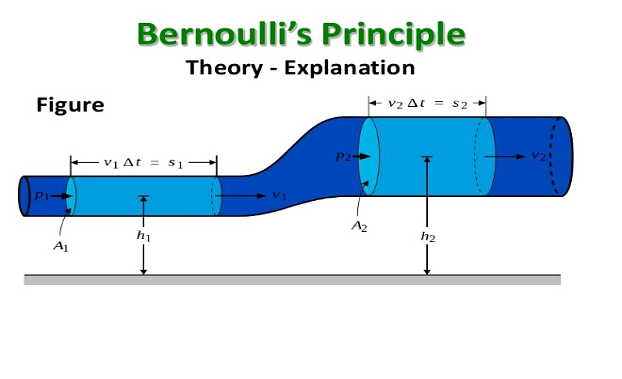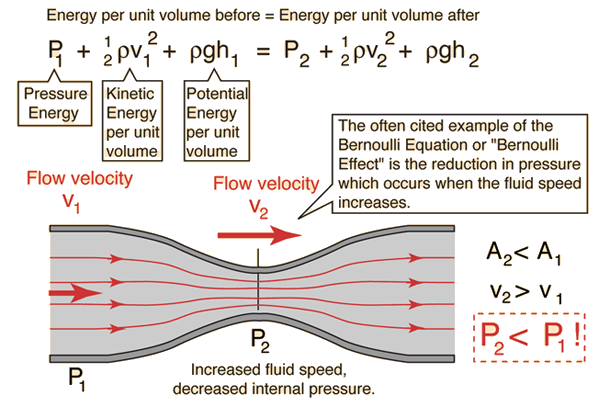Education
- Laplace's Correction To Newton's Formula
Assuming isothermal conditions to prevail when sound travels through air, Newton has applied Boyle's law to the changes in pressure and volume. In a region of compression, there is a slight increase in temperature and in a region of rarefaction, there...
- Physics Engineering Syllabus By Ioe
Physics Syllabus For Engineering Entrance Examination In Nepal Given by Institute Of Engineering IOE :Unit I. Mechanics:DimensionsEquations of motion, Motion of a projectile. Laws of motion.Addition and subtraction of vectors. Relative velocity. Equilibrium...
- Collision Theory
General Introduction:-Generally collision theory is the theory which explains about how chemical reaction takes place.The process of intermixing of reactants and striking between reacting species is called collision.The chemical reaction is only possible...
- Entrance Exam Questions Of Class 11 (physics )
Question Option1 Option2 Option3 Option4 Answer Total internal reflection can occur when lights passes from: a denser to rarer medium a rarer to denser medium one medium to another of equal refractive index medium to another of equal absorption...
- Hseb Possible Physics Questions Of Class 11
PHYSICS | QUESTION MODEL HSEB QUESTION MODEL OF PHYSICS WITH POSSIBLE QUESTIONS CLASS : 11 For : 2070 HSEB Model Question Time : 3 hrsFull Marks : 75Pass marks : 27 Group ‘A’Q.1. Answer in brief, any SIX questions. [2 X 6 = 12] ...
Education
Bernoulli's principle
Bernoulli's principle which is physical principle formulated by Daniel Bernoulli states that as the speed of a moving fluid (liquid or gas) increases, the pressure within the fluid decreases. The phenomenon described by Bernoulli's principle has many practical applications; it is employed in the carburetor and the atomizer, in which air is the moving fluid, and in the aspirator, in which water is the moving fluid. In the first two devices air moving through a tube passes through a constriction, which causes an increase in speed and a corresponding reduction in pressure. As a result, liquid is forced up into the air stream (through a narrow tube that leads from the body of the liquid to the constriction) by the greater atmospheric pressure on the surface of the liquid. In the aspirator air is drawn into a stream of water as the water flows through a constriction. Bernoulli's principle can be explained in terms of the law of conservation of energy (see conservation laws, in physics). As a fluid moves from a wider pipe into a narrower pipe or a constriction, a corresponding volume must move a greater distance forward in the narrower pipe and thus have a greater speed. At the same time, the work done by corresponding volumes in the wider and narrower pipes will be expressed by the product of the pressure and the volume. Since the speed is greater in the narrower pipe, the kinetic energy of that volume is greater. Then, by the law of conservation of energy, this increase in kinetic energy must be balanced by a decrease in the pressure-volume product, or, since the volumes are equal, by a decrease in pressure.

 Steady-state flow caveat: While the Bernoulli equation is stated in terms of universally valid ideas like conservation of energy and the ideas of pressure, kinetic energy and potential energy, its application in the above form is limited to cases of steady flow. For flow through a tube, such flow can be visualized as laminar flow, which is still an idealization, but if the flow is to a good approximation laminar, then the kinetic energy of flow at any point of the fluid can be modeled and calculated. The kinetic energy per unit volume term in the equation is the one which requires strict constraints for the Bernoulli equation to apply - it basically is the assumption that all the kinetic energy of the fluid is contributing directly to the forward flow process of the fluid. That should make it evident that the existence of turbulence or any chaotic fluid motion would involve some kinetic energy which is not contributing to the advancement of the fluid through the tube.
Steady-state flow caveat: While the Bernoulli equation is stated in terms of universally valid ideas like conservation of energy and the ideas of pressure, kinetic energy and potential energy, its application in the above form is limited to cases of steady flow. For flow through a tube, such flow can be visualized as laminar flow, which is still an idealization, but if the flow is to a good approximation laminar, then the kinetic energy of flow at any point of the fluid can be modeled and calculated. The kinetic energy per unit volume term in the equation is the one which requires strict constraints for the Bernoulli equation to apply - it basically is the assumption that all the kinetic energy of the fluid is contributing directly to the forward flow process of the fluid. That should make it evident that the existence of turbulence or any chaotic fluid motion would involve some kinetic energy which is not contributing to the advancement of the fluid through the tube.
It should also be said that while conservation of energy always applies, this form of parsing out that energy certainly does not describe how that energy is distributed under transient conditions. A good visualization of the Bernoulli effect is the flow through a constriction, but that neat picture does not describe the fluid when you first turn on the flow.
Another approximation involved in the statement of the Bernoulli equation above is the neglect of losses from fluid friction. Idealized laminar flow through a pipe can be modeled by Poiseuille's law, which does include viscous losses resulting in a lowering of the pressure as you progress along the pipe. The statement of the Bernoulli equation above would lead to the expectation that the pressure would return to the value P1 past the constriction since the radius returns to its original value. This is not the case because of the loss of some energy from the active flow process by friction into disordered molecular motion (thermal energy). More accurate modeling can be done by combining the Bernoulli equation with Poiseuille's law. A real example which might help visualize the process is the pressure monitoring of the flow through a constricted tube.

Bernoulli's Equation:-
The Bernoulli Equation can be considered to be a statement of the conservation of energy principle appropriate for flowing fluids. The qualitative behavior that is usually labeled with the term "Bernoulli effect" is the lowering of fluid pressure in regions where the flow velocity is increased. This lowering of pressure in a constriction of a flow path may seem counterintuitive, but seems less so when you consider pressure to be energy density. In the high velocity flow through the constriction, kinetic energy must increase at the expense of pressure energy. Steady-state flow caveat: While the Bernoulli equation is stated in terms of universally valid ideas like conservation of energy and the ideas of pressure, kinetic energy and potential energy, its application in the above form is limited to cases of steady flow. For flow through a tube, such flow can be visualized as laminar flow, which is still an idealization, but if the flow is to a good approximation laminar, then the kinetic energy of flow at any point of the fluid can be modeled and calculated. The kinetic energy per unit volume term in the equation is the one which requires strict constraints for the Bernoulli equation to apply - it basically is the assumption that all the kinetic energy of the fluid is contributing directly to the forward flow process of the fluid. That should make it evident that the existence of turbulence or any chaotic fluid motion would involve some kinetic energy which is not contributing to the advancement of the fluid through the tube.
Steady-state flow caveat: While the Bernoulli equation is stated in terms of universally valid ideas like conservation of energy and the ideas of pressure, kinetic energy and potential energy, its application in the above form is limited to cases of steady flow. For flow through a tube, such flow can be visualized as laminar flow, which is still an idealization, but if the flow is to a good approximation laminar, then the kinetic energy of flow at any point of the fluid can be modeled and calculated. The kinetic energy per unit volume term in the equation is the one which requires strict constraints for the Bernoulli equation to apply - it basically is the assumption that all the kinetic energy of the fluid is contributing directly to the forward flow process of the fluid. That should make it evident that the existence of turbulence or any chaotic fluid motion would involve some kinetic energy which is not contributing to the advancement of the fluid through the tube. It should also be said that while conservation of energy always applies, this form of parsing out that energy certainly does not describe how that energy is distributed under transient conditions. A good visualization of the Bernoulli effect is the flow through a constriction, but that neat picture does not describe the fluid when you first turn on the flow.
Another approximation involved in the statement of the Bernoulli equation above is the neglect of losses from fluid friction. Idealized laminar flow through a pipe can be modeled by Poiseuille's law, which does include viscous losses resulting in a lowering of the pressure as you progress along the pipe. The statement of the Bernoulli equation above would lead to the expectation that the pressure would return to the value P1 past the constriction since the radius returns to its original value. This is not the case because of the loss of some energy from the active flow process by friction into disordered molecular motion (thermal energy). More accurate modeling can be done by combining the Bernoulli equation with Poiseuille's law. A real example which might help visualize the process is the pressure monitoring of the flow through a constricted tube.
- Laplace's Correction To Newton's Formula
Assuming isothermal conditions to prevail when sound travels through air, Newton has applied Boyle's law to the changes in pressure and volume. In a region of compression, there is a slight increase in temperature and in a region of rarefaction, there...
- Physics Engineering Syllabus By Ioe
Physics Syllabus For Engineering Entrance Examination In Nepal Given by Institute Of Engineering IOE :Unit I. Mechanics:DimensionsEquations of motion, Motion of a projectile. Laws of motion.Addition and subtraction of vectors. Relative velocity. Equilibrium...
- Collision Theory
General Introduction:-Generally collision theory is the theory which explains about how chemical reaction takes place.The process of intermixing of reactants and striking between reacting species is called collision.The chemical reaction is only possible...
- Entrance Exam Questions Of Class 11 (physics )
Question Option1 Option2 Option3 Option4 Answer Total internal reflection can occur when lights passes from: a denser to rarer medium a rarer to denser medium one medium to another of equal refractive index medium to another of equal absorption...
- Hseb Possible Physics Questions Of Class 11
PHYSICS | QUESTION MODEL HSEB QUESTION MODEL OF PHYSICS WITH POSSIBLE QUESTIONS CLASS : 11 For : 2070 HSEB Model Question Time : 3 hrsFull Marks : 75Pass marks : 27 Group ‘A’Q.1. Answer in brief, any SIX questions. [2 X 6 = 12] ...
